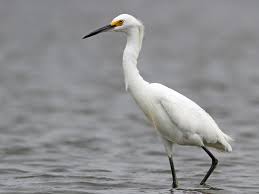We recently returned from a rewarding
visit to Belize, hosted by a Quaker friend who has lived there for
thirty years. With Judy’s planning and guidance, we were able to
experience both natural richness and cultural diversity in this tiny
country of 335,000 below the southeastern corner of Mexico. Since
the country only received independence (formerly British Honduras) in
1981, she has matured with the recently freed colony.
Though less wealthy and with somewhat
less ecological diversity, Belize is similar to Costa Rica. Forty
percent of the country has been placed into ecological preserves.
This process began with independence, and Judy has played a part in
that history. She is a longtime member of the Belize Audobon Society, serving on its board until recently. When she took us to Cockscomb, a
wild, jungly wildlife sanctuary near the south central coast, we learned that she
was part of the team who re-introduced the howler monkey to the
reserve more than 25 years ago. The original 14 troops introduced on 3,000 acres have repopulated far beyond that original territory, filling out the 250,000 acre preserve. In a world plagued by dismal stories, this one is definitely a success!
Judy lives on Cay Caulker, renting a
cottage that fronts the lagoon formed by the world’s second longest
barrier reef, running 230 miles about a mile offshore. It is
healthier than the Great Barrier Reef. We had a wonderful day
snorkeling about it, highlighted by feeding the sting rays (and
the occasional small nurse shark) with sardines, while we hung out in
the water with the 40-odd fish. The rays are quite docile, and their
skin is delicately smooth, which surprised me. I also watched a
Frigatebird steal a fish from a Laughing Gull in mid-air. Suddenly I understood what kind of frigate was the reference!

Judy is a publisher of both cultural
and naturalist books about Belize, as well as the series of pamphlets
issuing from summer sessions of the Quaker Institute for the Future.
Her neighbor Dorothy is a partner in this enterprise, overseeing many
children’s books. They are both longtime birders, and Judy arranged
for the premier birder of the country to guide the four of us for
three days, the first part of a ten-day tour that Judy and Dorothy arranged for
us.
Our adventures with Roni Martinez centered on La Milpa, a large
preserve inland to the north. Just about a month before our visit,
Roni received his country’s the most prestigious environmental
award, and we were honored to have him guide us to a
once-in-a-lifetime experience. At Geeta’s instigation, we have
birded before, including a couple of outings in Costa Rica, the bird
capital of Central America. But it didn’t take until we had those
three days under Roni’s expert guidance. We identified over a
hundred and twenty different birds, and I have clear images of most
of them (we are much less able to identify calls). Now, one of us
jumps out of bed each morning to go check out a new call or a flash
of color.

From La Milpa we drove slowly to a
rendez-vous with the chief guide at our lodge in Crooked Tree.
Rudy was also excellent, and we were treated the next morning to a
boat ride on the lagoon dense with shore birds of all sorts, as well
as iguanas sunning themselves in the tops of brush bordering the
lagoon. Judy had said before our visit that we would see large
flocks of shore birds congregating around the shrunk water cover
during dry season, but unseasonal rains produced a plethora of water,
with our room looking out on a small lagoon in the rear and a virtual
lake as far as the eye could see in front. The food here was the
best we had in Belize.
In my next post, you'll hear about Rudy's "Ultimate Safari," with four septugenarians bungling about in canoes in the wild wetlands of Crooked Tree.
# posted by Robert McGahey @ 4:42 PM





